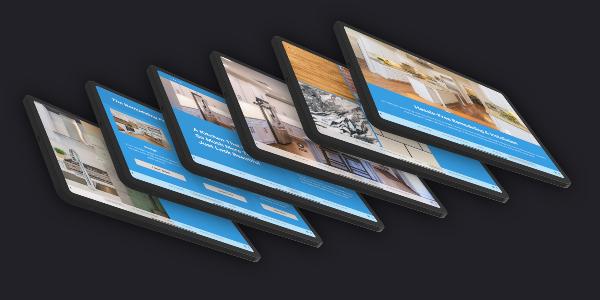Tips for making more effective sales presentations to your roofing leads

By IKO.
The Rules of Selling Have Changed. Have You?
You know from firsthand experience that the rules of selling have changed. Think back to the last time you purchased a new vehicle. You went online to research the make, model and mileage. Perhaps you looked at consumer reports or read online reviews.
You found a reputable dealership near you and had a good idea of price and options before you ever let yourself be approached by a salesman and gave him a chance to make a pitch. And, if he made you feel the least bit uncomfortable during his sales pitch presentation, you walked and went elsewhere, right?
For homeowners, a roof replacement is a hefty investment. They go through the same process you did. They go online to do their homework. They rely on peer reviews and recommendations.
In the past, effective sales presentations were based on product and price. Prospects had no choice but to rely on the salesman’s pitch and knowledge to obtain information, then they’d haggle over price. Sellers were trained in the time-honored “ABC” tradition shown above – Always Be Closing.
These days, your competitors are offering roofing products of comparable quality. Services have largely become commoditized, and pricing can be a race to the bottom.
So, how can you give a good sales presentation that closes your roofing leads more often? [Please link to lead generation article In this article, we’ll look at sales presentation techniques and strategies that work in this ever-changing buyer’s market. We’ll explore what a successful sales presentation should include. We’ll also discuss some fundamental principles of effective persuasion that you can apply to your next sales presentation.
We recommend that you read our article on the importance of first impressions when choosing a roofing contractor, too.
Change Your Mindset and Your Results Will Change
To give a great sales presentation, the work starts from within. You have to change the way you think about selling and understand what truly motivates and persuades your prospects or roofing leads to become customers.
As we mentioned, it’s less about product and price. These days, it’s more about two things: value and relationship. They have become your differentiators.
The more technology advances, the greater the need for human interaction. It sounds cliché now, but it’s true: people buy from people they know, like and trust. Your role has shifted from being the “sales guy” to being a subject matter expert and a dependable resource. When you focus on receiving a good education, developing your communication skills and building a relationship, you will inevitably win more jobs.
Just remember that you can’t control your results; you can only control your actions. If you make enough sales calls, the law of averages dictates that eventually someone, somewhere, will buy.
However, when you focus on developing a relationship rather than making a sale and you replace hustle with patience, you’ll feel less pressure. Your prospects will see more of your authentic self, they’ll respond favorably and you’ll close more often.
To make an effective sales presentation these days, understand that people consume information and learn in different ways. Of course, you can’t know a person’s particular learning style beforehand. Some people won’t even be aware of it themselves!
Simply put, there are four types of learners. Let’s call them the “Whats,” the “Whys,” the “Hows” and the “What Ifs,” then we’ll see what kinds of material will resonate best with each type. By creating a multimedia sales presentation that incorporates both traditional and digital marketing collateral, you’ll appeal to all four groups without having to guess what kind of learner your prospect is.
The “Whats” just can’t get enough information. They research, compare and analyze everything before making a decision. Show them facts, figures, stats and charts. Offer them traditional product brochures to peruse at their leisure and direct them to online resources where they can satisfy their curiosity.
Your presentations should always include actual shingle samples, but this group will respond the most enthusiastically to seeing and touching them.
The “Whys” need a reason for everything. In a meeting, they will be your hecklers! Knowing this, you can anticipate questions and objections in advance, and prepare to have your presentation answer them. This group loves Frequently Asked Questions (FAQs) and Questions & Answers (Q&A). They will want to know why one shingle is better than the next or why you’re recommending accessory products.
Give them a handout of FAQs and encourage them to add to it. They’ll also appreciate a chat box on your website or engaging with you on Facebook where they can ask questions directly of you or their peers.
The “Hows” will be interested in processes and next steps. How will you protect their property while the work is going on? How can they finance it? How will their home look with a new roof?
For the most part, they’ll count on you for the right information and rationale without question. This group responds well to YouTube videos, product demos and software apps, like IKO’s RoofViewer®, which can help them visualize the results.
The “What Ifs” are the most challenging group. They will crave and absorb all the same information as the other three combined, but then their imagination will take over as they explore possibilities you may not have considered or planned for.
Be sure to offer lots of options, in terms of product, color, warranty, add-ons, etc., and be exceptionally well-informed of all the details. They will wonder, “What if a hurricane hits, and I’m 10 years into this warranty instead of that one?” or “What if I get a white roof and the algae-resistant granules don’t work as advertised?” They anticipate, imagine and hypothesize, so be prepared.
Focusing on the buyers’ needs is an important step and one that’s often overlooked. Let’s discuss it in greater detail.
Successful salespeople choose their words and actions to be as persuasive as possible. You may not realize it, but your communication skills affect your credibility. By expressing yourself clearly and concisely – in writing or verbally – you can influence prospects in a positive way.
Norbert Aubuchon, author of “The Anatomy of Persuasion,” describes a five-step thought process that the buyer goes through that you, as the salesperson, should recognize and integrate into your communications and sales presentation wherever possible.
He says the buying process begins when the homeowners identify an unmet need. Then, they recognize its importanceand decide to search for fulfillment by doing their research, asking friends and family for recommendations. After evaluating their options, they make a buying decision.
High-performing Strategies and Sales Presentation Tips to Help You Close More Sales
1) Be on time and make a good impression. Build rapport with the buyer. Finding common ground and starting with small talk helps put people at ease and lets them get to know you as a person. Maintain good eye contact, smile and be friendly.
2) Find out about the homeowners and their unmet needs and goals. Ask open-ended questions that require more than a yes or no answer. Then, show that you’re truly listening to the answers by asking relevant follow-up questions or rephrasing their responses to prove your understanding.
Many salespeople make the big mistake of touting their product right off the bat. Although the benefits of your product or service are important, this is not the right time to talk about them.
For example, suppose your prospects are planning to put their house on the market and want to boost its curb appeal and potential resale value with a new roof without spending a lot of money. If you didn’t know this upfront, you might try to sell them your most expensive, high-end designer shingle. How do you think that would turn out?
3) Once you’ve done a thorough job of discovering exactly what your prospects need, you can introduce and recommend solutions. This is the time to speak of features and benefits. The features are the physical attributes of the product; the benefits are what the product has to offer the prospect and should dovetail with his or her particular problem.
For instance, you can talk about how your shingles have deep shadow bands and color gradations to emulate the look of natural slate tiles, but the benefit is how your prospects’ home will look so elegant, cause the neighbors serious roof-envy or potentially boost its resale value.
It can be very effective to let your prospects know why a certain product is NOT right for them, too. They will appreciate that you have their best interests at heart, which further earns their trust and respect
4) Seek and obtain their commitment. Prospects will often give you a signal that they’re close to making a decision, so learn to look for the opening and ask for a commitment. Some will encourage you with a quiet smile or a nod; others will say, “This sounds like what we need.”
At this point, you can expect further questions about pricing, finance options, availability, project start time, services and other aspects.
Finalize the sale by asking your prospects if you might answer any other questions and review what you’ve discussed. Don’t shy away from asking for a commitment because you’re afraid of rejection or coming across as pushy.
If you’ve done a good job up to now in terms of building rapport and appearing confident, your prospects will be expecting you to ask for the sale. Did they say “yes”? Then, sincerely thank them and assure them that they’ve made a great decision.
Did they say they’d like time to discuss it privately and get back to you? Then, ask when it would be convenient for you to phone or drop by to follow up. You can create a sense of genuine and legitimate urgency by letting them know your work schedule is filling up fast.
How to Create Value in Your Prospects’ Minds.
So far, we’ve talked mainly about developing rapport and creating a sales presentation that will showcase your products’ and services’ features and benefits in a way that offers solutions to your prospects’ particular problem.
But what can you do to convince homeowners of the value you offer that sets you miles apart? What will make them choose to hire you over your competitors?
First of all, recognize that value is going to vary from one person to the next. That’s why it’s so critical to start with that discovery phase we talked about earlier. It will help you figure out what matters most to any given prospect. Then, you can tailor your sales presentation to highlight what they consider to be most important.
Dr. Robert Cialdini is a social scientist and professor emeritus at Arizona University who published a landmark book in 1984, called “Influence: The Psychology of Persuasion.” It outlines his theory of influence, based on six key universal principles: reciprocity, commitment, social proof, authority, liking and scarcity; and he recently added a seventh: unity.
Let’s look at each principle and see how you can apply them to take your sales presentation techniques to the next level of success.
Reciprocity. This refers to the fact that people tend to return favors in kind. We’re more inclined to do something for someone when he/she done something for us first. That’s why free samples work so well. As a roofer, think about what you might offer to sweeten the pot. It doesn’t need to cost you anything. Even a simple kindness will subconsciously prompt a similar response. What’s important is that you make the offer or gesture first and that it be genuine, not manipulative.
Commitment. Cialdini noted that, when people commit to a goal or idea, either in writing or verbally, they are likely to honor that commitment even when the initial motivation or incentive is withdrawn. That’s why it’s so important for you to ask for your prospects’ commitment.
For example, suppose a couple had finally committed to buying a certain model of TV after a lot of shopping around. They had a discount coupon when they started, but it had since expired. They will likely still buy the same TV at regular price because they had invested so much time in researching, getting recommendations from friends, etc.
Social proof. People want to be accepted and feel a sense of belonging. Because they seek out and value the opinions of others, you have to supply them with testimonials from satisfied customers (in a binder, on your website and preferably both), have references for them to check and, ideally, be able to direct them to favorable online reviews. Don’t be afraid to have them check online reviews because how you respond to negative comments can demonstrate your professionalism.
Authority. People place confidence in the expertise of others. In Cialdini’s research, a real estate firm made one simple, no-cost change in handling in-bound calls that resulted in a 20 percent increase in the number of appointment bookings and a 15 percent increase in the number of signed contracts.
When people phoned to rent a property or sell one, the receptionist offered to direct them to the appropriate person. Further, she told them how much experience that person had! These improved results occurred because callers knew immediately that they were speaking to an expert.
How easy would it be to have your receptionist handle calls this way? A prospect phones to enquire about installation and is directed to Peter, who, the receptionist adds, has been supervising all your projects for over 20 years.
Try qualifying your employees – from the sales reps and office staff to your crews and yourself – with a brief statement to establish their credentials within your presentation.
Liking. As mentioned earlier, people want to deal with people they know, like and trust. But can you really do something to enhance your likeability? Dr. Cialdini says yes! “We like people who are similar to us, people who pay us compliments and people who cooperate with us toward mutual goals.”
Once again, that vital initial discovery process will help you uncover exactly what those goals are, so you can demonstrate your willingness to work toward achieving them with your customer.
Consensus. When you hang a door tag on prospects’ homes telling of another roof you’ve done in the neighborhood, you’re letting them know that other people just like them have already trusted in you. This is similar to, but stronger than, social proof, and you should insert the idea of consensus into your sales presentations, if possible. It might work well in communities where environmental policies are obliging homeowners to seek out roofers specializing in certain materials, for example.
Scarcity. It’s only human to want what you can’t have or fear losing. If you can introduce the idea of scarcity in a way that’s ethical and true, it can be an excellent motivator. As mentioned previously, you could let an uncommitted prospect know that you’ll need a decision within a certain time frame because your schedule fills quickly.
Cialdini’s recent seventh universal principle of influence is unity in terms of shared identities. He believes that the more we identify ourselves with others, the more we are influenced by these others. So, if you’re making a sales presentation to a family, be sure that your examples and social proofs include testimonials and solutions that served similar families in similar circumstances well.
We hope that you’ve found this information helpful. There are lots of other resources available online that deal with specific sales presentation techniques; but the real key is understanding what’s important to each individual prospect and gearing your content to that person.
If you implement these tips and techniques into your next presentation, we’d love to hear your results.
Learn more about IKO.
Source: IKO





















Comments
Leave a Reply
Have an account? Login to leave a comment!
Sign In